By Dan Weisz
Male Northern Cardinals are perennial favorites among people. They are a perfect combination of familiarity and style and are so very conspicuous due to that shade of red! During Tucson’s recent spell of “winter” weather, the overcast weather allowed me to get some great looks at a pair of Cardinals as they returned to my sunflower seed feeders over and over again. Male Northern Cardinals are brilliant red with a black mask and throat. Birdnote has a great introduction to this bird: https://www.birdnote.org/listen/shows/northern-cardinal-meet-cardinal
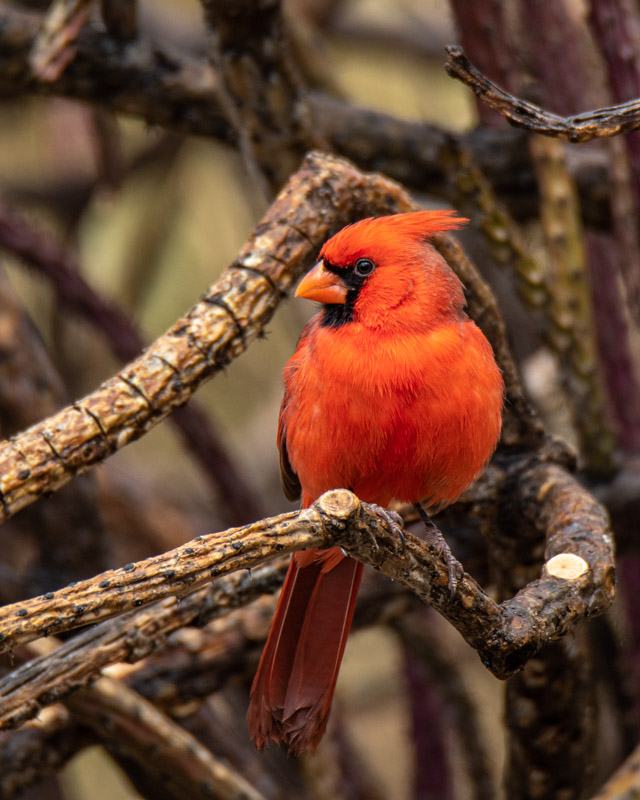
And while Birdnote affirms that Cardinals are a bird of the Eastern United States (and that is true), the range map tells you how special it is that we have them in Arizona:
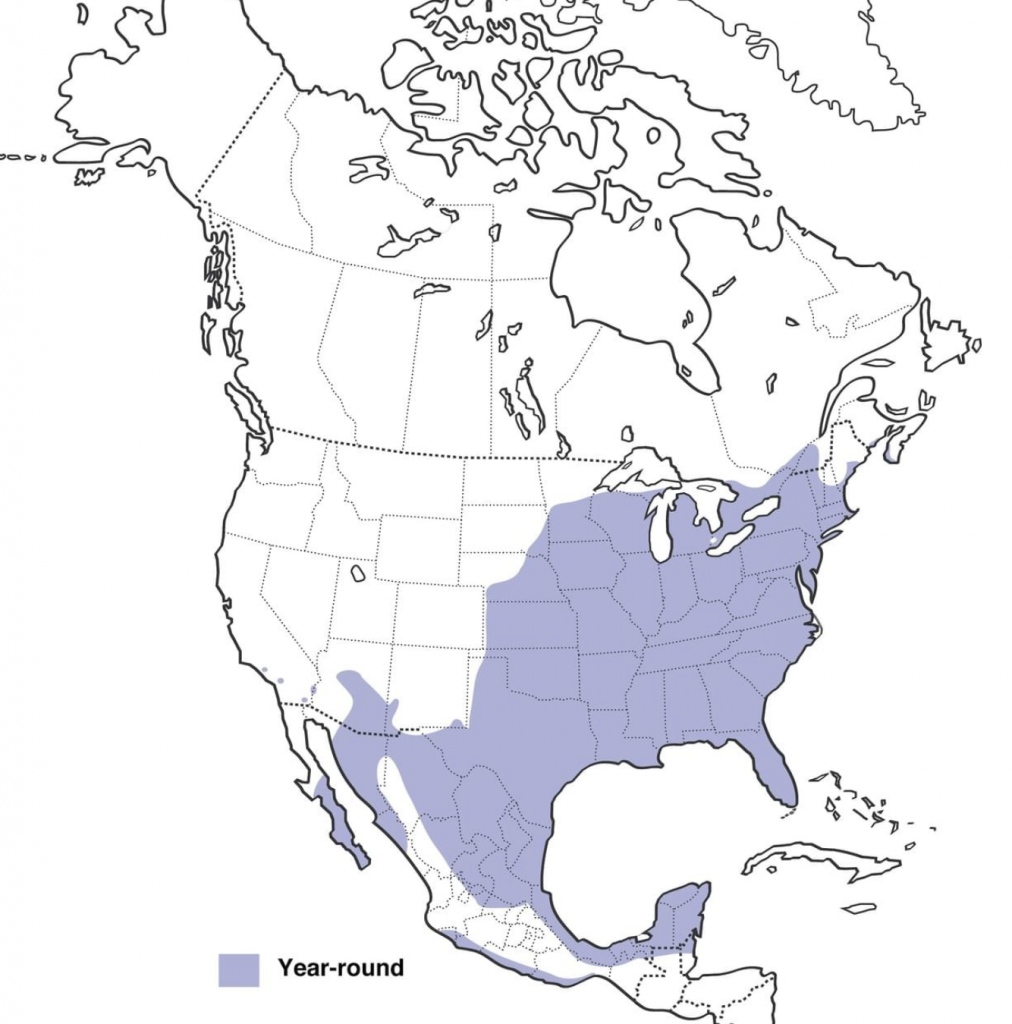
Usually I see them on the cholla cactus behind my house. They perch there before heading over to the feeder. This time, I saw the bird move to another dead cholla skeleton allowing us a look at his back. When the Cardinal’s head feathers lay back on his head, is generally shows the bird is relaxed.
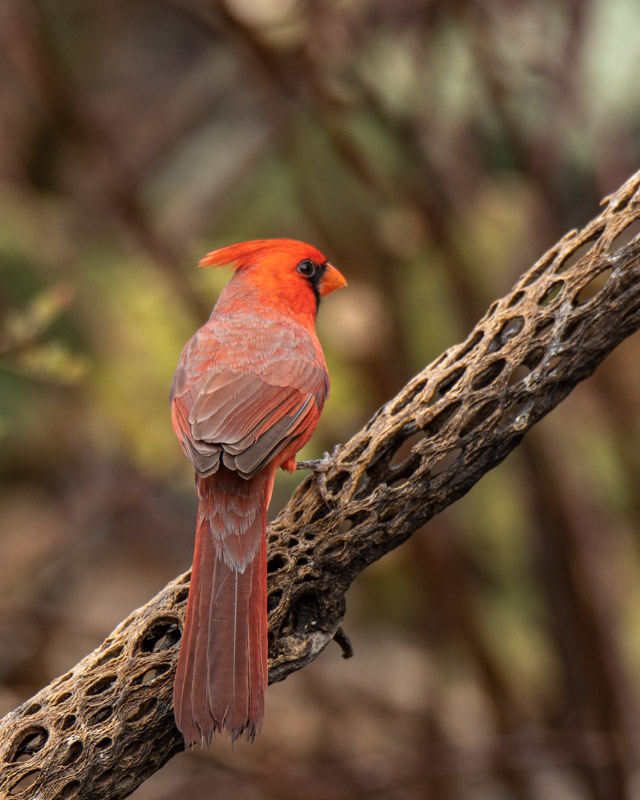
A female Cardinal landed on that same piece of cholla. I snapped this photo just as she was landing and bringing her wing feathers down. As pretty as this bird is, female Cardinals can be very feisty: https://www.birdnote.org/listen/shows/feisty-cardinal
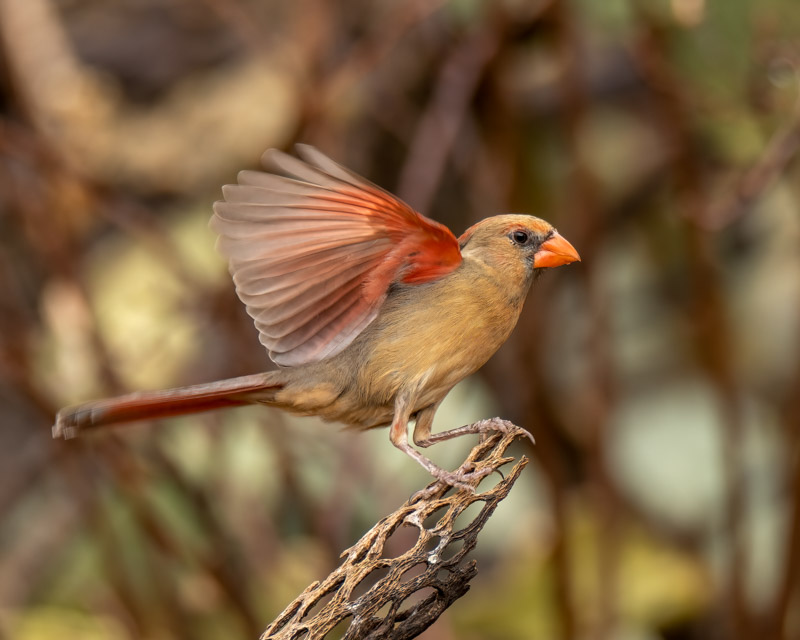
With her crest completely flat, the Cardinal is very relaxed. She was very close to the male. Female Cardinals are pale brown, with a hint of orange in their feathers. They have more reddish tinges in the wings, tail and crest. There is also a hint of the male’s black face mask. Both male and female Cardinals have a short, very thick orange bill. The straight line between the top and lower bills help to distinguish this species from the local Pyrrhuloxia birds, which look similar.
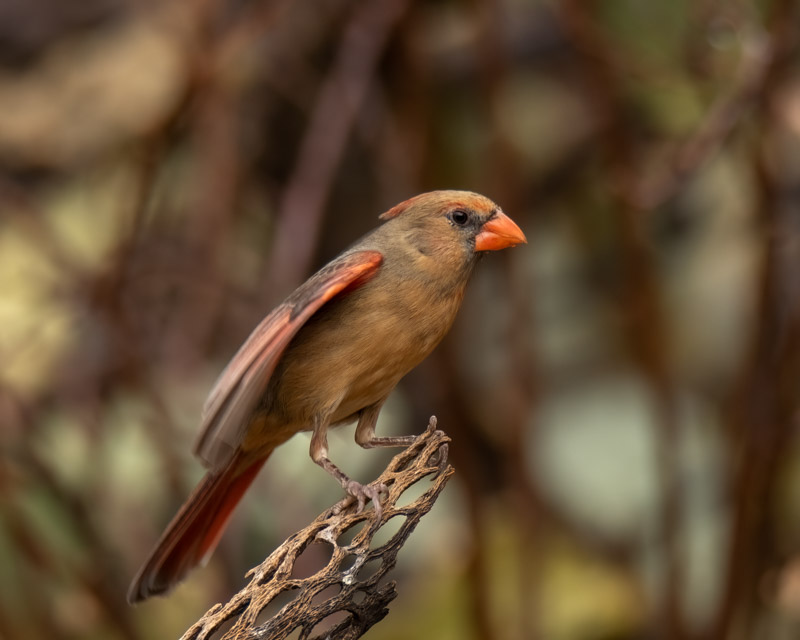
The female flew off to the seed feeder and the male took her place at the end of the cholla. Here is a nice look at his beak in this shot. I was watching the birds from inside the house at an open kitchen window. The Cardinal seemed to know my presence but his relaxed demeanor told me he wasn’t worried.
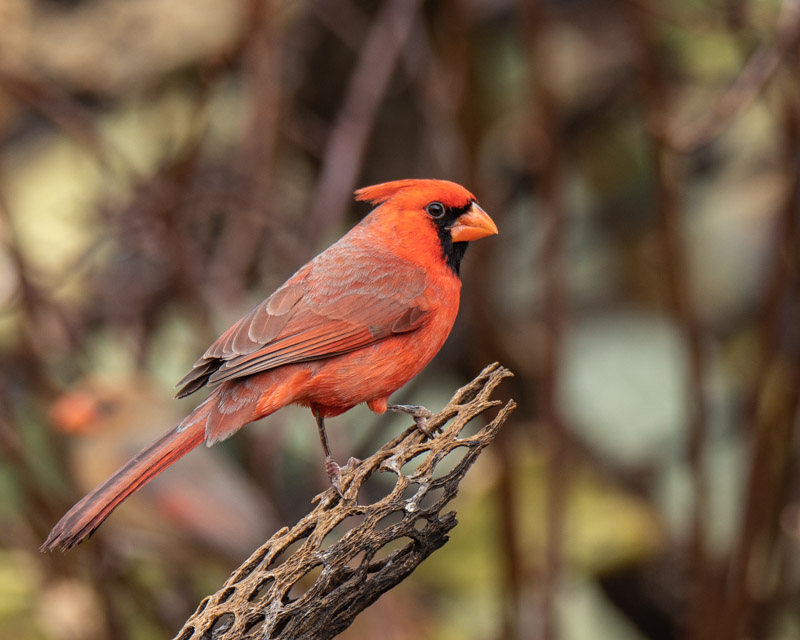
He took another look before flying off to feed.
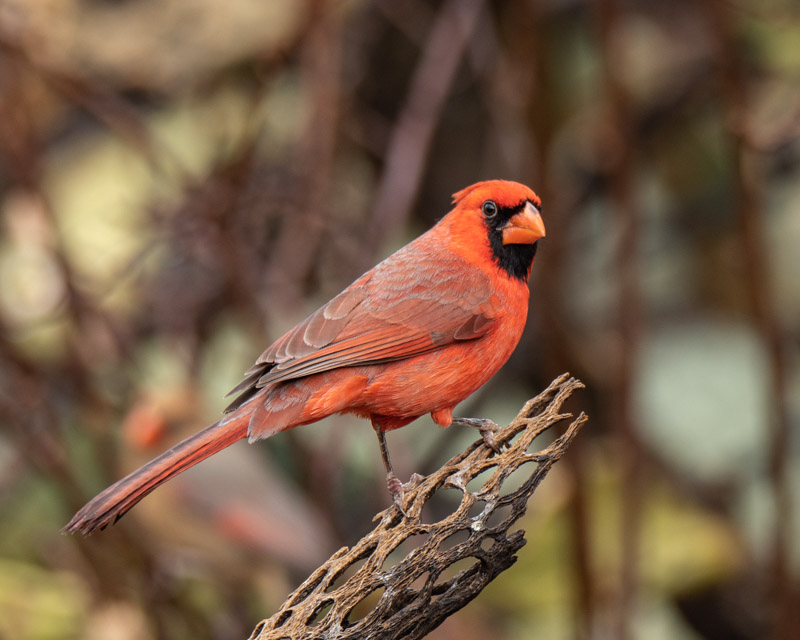
This is the Cardinal specific feeder I use. Cardinals love sunflower seeds and these black oil sunflower seeds are especially good for them. Black oil sunflower seeds are meatier than striped sunflower seeds and they have a higher oil content providing more nutrition and calories in ever bite. In addition, they have thinner shells, making them easier for birds to crack open. Many birds like and eat black oil sunflower seeds.

What makes this seed feeder special is that the seeds are only accessible when a Cardinal lands on the perch, causing the green shield to rotate downward. When this happens, the curve in the green shield reveals the opening to the sunflower seeds. If a smaller bird lands on the perch, it does not have enough weight to force the shield down. If a bird heavier than the Cardinal lands on the perch, the shield drops down so much that the upper part of the shield blocks the opening so the seeds are not accessible. Because people have asked, here is a link to where I found this feeder: https://nature-expert.ca/en/Bird-Feeders-Accessories/Cardinal-Feeder?product_id=51
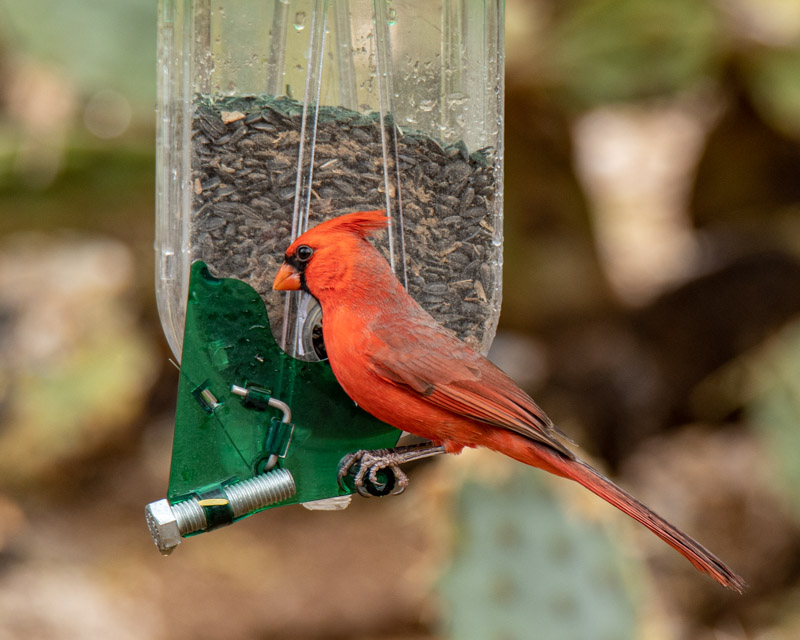
“Here’s looking at you kid!” The Cardinal really seems to want to figure me out. With his crest flat against his head, I know this is out of curiously and not fear. I wish I could speak his language.
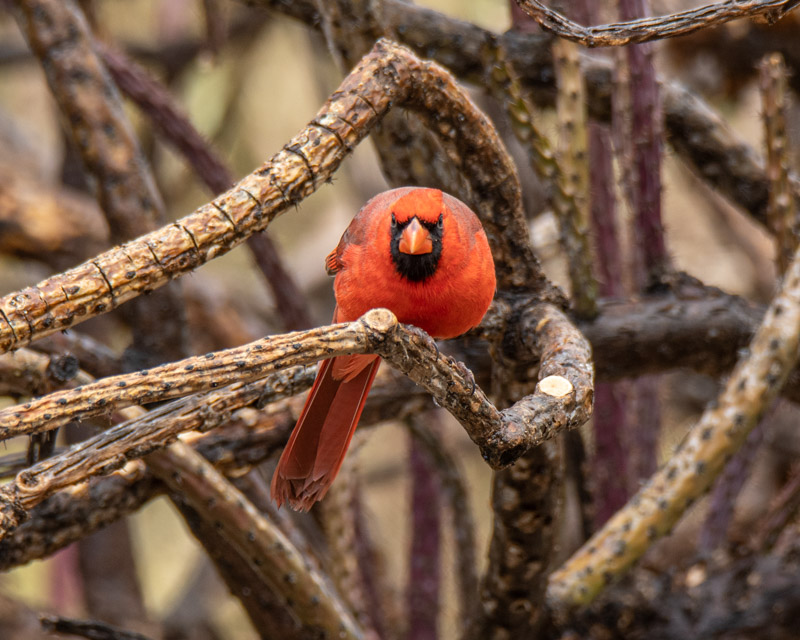
He hopped over to the next branch, another common perch.
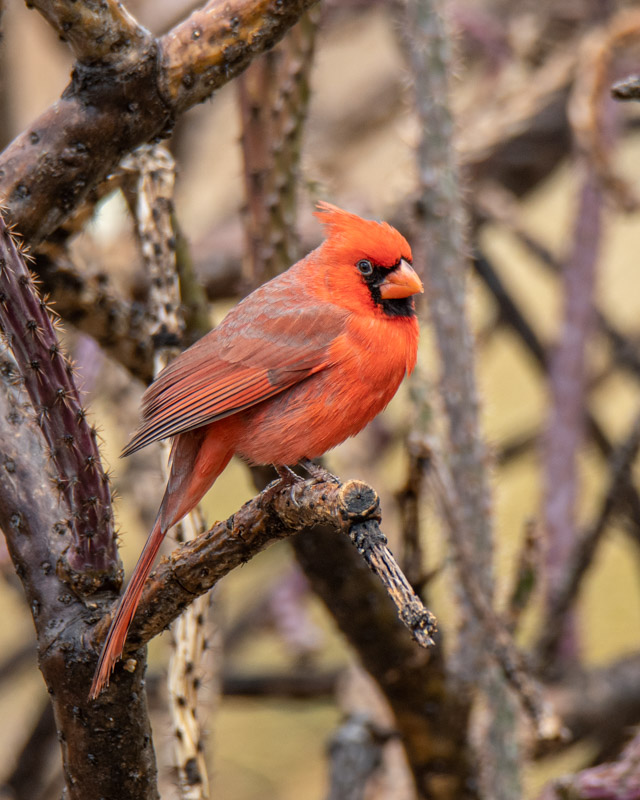
And then he returned to the business at hand: filling his belly. Next stop, the feeder! Soon we will able to hear the Cardinals singing again: https://www.birdnote.org/listen/shows/voices-and-vocabularies-cardinals-duet
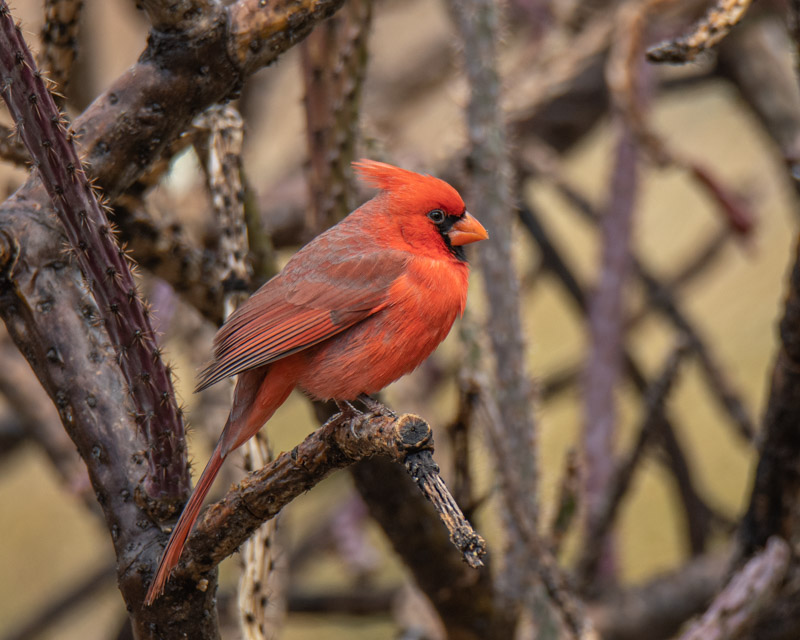
As the days begin to get longer here, this extra daylight will trigger hormonal changes and the male Cardinals will begin to sing from the treetops. Even while it is cold out, the Cardinals will let us know Spring is on its way. Perhaps this optimism along with its beauty is why the Northern Cardinal is the most common state bird with seven different states having claimed it as their official state bird (Illinois Indiana, Kentucky, North Carolina, Ohio, Virginia and West Virginia). FYI, Arizona’s state bird is the Cactus Wren.
